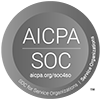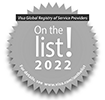Feb. 21 was the first productive day of 2020 for employees in the United Kingdom according to new Vitality research. In 2019, an average of 38 working days were lost by each employee due to physical- and mental health-related absence and presenteeism. While in reality these days are spread out across the whole year at an estimated cost to British businesses and the economy of £91.9bn ($118.61 billion USD), a £10bn ($12.91 billion USD) increase over 2018, the implications are likely similar for the United States.
The study, now in its eighth year, is developed by Vitality in partnership with RAND Europe, the University of Cambridge, and Mercer. It’s one of the largest and most comprehensive surveys on workplace well-being in the UK, surveying 26,393 employees and 130 businesses across the UK in 2019.
With the decline in productivity, presenteeism is on the rise where employees show up for work but are unable to give their best due to mental and physical health concerns. And it appears that the younger workforce (18- to 25-year-olds) are particularly vulnerable with 55% admitting to being at work and unable to perform at their peak productivity, compared to 38% of employees aged 45 and over.
Given the significant cost implications based on this annual benchmark, what strategies should employers consider to improve employee health and productivity?
Take a whole person approach to health and well-being programs and the workplace environment. This research illustrates that productivity cannot be viewed in isolation and is the result of a complex combination of factors that impact an individual’s health from their lifestyle choices to mental well-being. A previous study found numerous factors including lifestyle, commuting time, physical and mental health, well-being, job and workplace environment impact employee productivity.
Increase efforts to address workplace mental well-being, with workers’ stress, depression and anxiety. Outside of ensuring that employees are aware of and using resources like employee assistance and substance use programs, consider offering tangible tools and applications for employers to improve sleep, encourage meditation and mindfulness.
Establish a robust and validated organizational measurement framework to quantify an organization’s unique risks. Without this data businesses cannot commit to and be held accountable for improvements over time. This is essential as businesses are increasingly responsible for organizational health, which is a function of the health of its inputs (its people) and outputs in the form of the effects of its products/services.
Capitalize on technology – embedded in science-driven organizational health programs – which has the potential to be a phenomenal enabler of both health and productivity.
As we look to the workforce of the 21st century, these are just a few of the solutions that are likely to make a powerful impact. Globally, Vitality will continue to help employers improve the health and well-being of their employees and their communities. These efforts can not only realize significant cost savings for companies and economies but will ultimately build a stronger and healthier society for us all.






